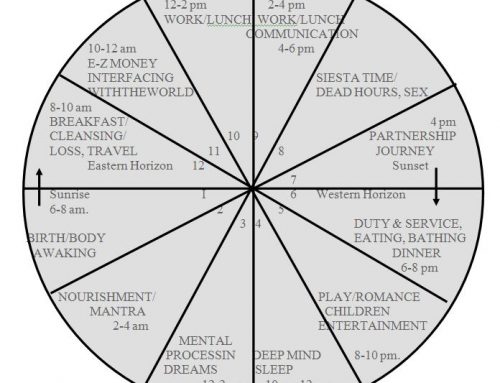1. Kill Sugar
The first step to clearing out toxic sludge in your body and building great immunity is the Three Square Meals eating plan. The next is to get a handle on sugar. For some people, this will be the single most important step to burning āma, kindling agni, and restoring health. Recent studies published in the Journal of American Medicine show that sugar kills, especially added or selective sugars found in soda, ketchup, juice, cakes, breads, and other comfort foods. People who got 20% of their calories from sugar had an almost 40% increased risk of death from cardiovascular disease compared to those who ate less than 10% of their calories from added sugars.
A therapist once told me, “Simon, sugar equals pain.” This is true for women as for men. Painful periods and inflammation result when we cannot process the quantities of sugar we ingest. Chronic inflammation breaks down the body and creates multiple factors that cause disease. The suffix “itis” means “inflammation”- think about how many painful medical conditions have this suffix: cystitis, appendicitis, arthritis… the list goes on, and all of these are exacerbated by excess sugar. Consider that sugar also robs your skin of elastin and collagen, accelerating aging and wrinkles. Combine this with cognitive decline and you have a serious case for doing something to curb this sweet killer.
The best way to kill sugar is to fast from it for five days. You can ease into this by gradually reducing your intake of soda, donuts, cereals, and other sugary foods or you can go cold turkey and quit all elective sugars at once. Elective sugars means foods that have processed sugar added to make them taste good, rather than, say, vegetables or grains which have small amounts of sugar naturally present.
Start by eliminating pop, candy, and all elective sugars these first few days. See how you feel. Fasting is a natural part of life, and doing it intelligently will help you heal your body. You can still enjoy green apples, carrots, and the sugar naturally present in many vegetables- but avoid sweet fruits. Though natural, they slow down the removal of āma since sugar feeds the bad yeasts and bacteria in your gut that in a vicious circle create more āma. You can have grains, but avoid sugary cereals. Read the labels on anything you buy, and try to ingest less than twenty grams of ‘elective’ sugar per day. This will bring you down to “Paleo” levels- the amount of sugar eaten by our cave-dwelling ancestors.
"Media and advertising suggest we should eat carbohydrate-rich meals often. They reason that this constant flow of carbohydrates is the best way to regulate your metabolism and prevent hypoglycemia, or low blood glucose. Truth is, unless you are diabetic this is exactly the opposite of what your body needs to properly regulate metabolism and hunger." -Juvenon Health Journal, April 16, 2014
After the first few days, you may like the feeling of a sugar-free body so much that you want to keep going. That’s fine; continue until you feel the need to reincorporate sugar back into your diet. Then return to your normal diet slowly, adding sugar back into your life and enjoying every little bit of it. Be like the Swiss, who savor their delectable chocolates as bite-size pieces…not massive blocks of dark brown āma that we ingest in America.
You can also try the 5-2 sugar punch: fasting from sugar for five days and allowing yourself to have it for two. The 5-2 diet has worked for bodybuilders and fitness enthusiasts who want rapid fat loss. Eating this way is said to improve performance both in the gym and the bedroom by boosting testosterone and putting the body in a fat-burning mode. In addition, it allows you to be social and splurge on weekends or birthday parties without messing up your fitness plans. Using this in the context of the Three Square Meals plan is a great way to burn āma and boost metabolism.
When you feel that your digestion is back on par, and āma is under control (by doing the tongue, poop, and weight tests above) you can return to eating more sugar with awareness. Pay attention to the signs of āma, and when you need to, be ready to take up your sword and kill the many-headed sugar hydra again. Some people will love the feeling of a sugar-free body so much that this becomes their lifestyle. Whatever option you choose, consider going on a sugar fast at least four times a year- your mind and body will thank you for it!
Note: diabetics, and people prone to hypoglycemia should NOT do this sugar fast without consulting their doctor. Please consult your health care professional before beginning any dietary changes or exercise.
Notes on the Program:
When beginning the fast, sometimes it helps to slowly reduce the sugar in your diet and work your way down. Do what your body and mind allow you and never force yourself. Harsh starvation diets end up making you feel sorry in the long run. This is not a diet, but a tool for reducing āma and inflammation.
Also, because it is impossible to completely eliminate sugar- after all, rice, breads, and vegetables all contain starches that convert to sugar in your body- we are focusing on the ‘elective’ sugars here- those you ingest in addition to your vegetables and grains. That means that you will still be eating carbohydrates- this is not an Adkins diet, though Adkins-style regimes are fasts from sugar and the foods that create āma- which is why people find them effective.
A Taste of Maturity
Ayurveda accords every taste a quality as well as a psychological effect. Sugar is anabolic- it builds tissues and creates nurturing and sweetness. It is most appropriate during childhood- the first stage of life when children require love and affirmation from their environment. When they cannot get it, sugar becomes a substitute for love. The best source of sugar for children comes from dairy, fruits and grains.
As adults we are supposed to outgrow this need for sweetness and move on to other tastes, but our psychology often gets stuck in past hurts- wounds that we continue to treat into middle age with primitive tools like sweet foods and outdated behavior. When children aren’t properly transitioned into adulthood they often retain immature coping patterns into their later years. Sugar psychologically relates to immaturity, the bitter taste to growing up and mature behavior. That is why grown ups evolve to appreciate things like beer, green salads, vegetables and other sources of the bitter taste- it is a natural part of becoming an adult.
In chapter ten of The Five Dharma Types- Vedic Wisdom for Discovering Your Purpose & Destiny, the six tastes, their psychological effects and their relationship to different stages of life are thoroughly analyzed. It is important to know what taste you need and which taste is in excess in your life at any given moment.
2.Take Triphala
Triphala (‘three fruits’) powder is fitness for your belly. Triphala is a herbal compound that cleanses, tones, and rejuvenates any tissue it touches, an Āyurvedic panacea that has received attention from Western science and herbalism alike. One of its ingredients (emblica officianalis or āmalakī in Sanskrit) has one of the highest concentration of bioavailable vitamin C of any food on the planet (twenty times greater than an orange!). In addition, it is heat-stable, so its effects aren’t lost when it’s dried or made into a tea. Āmalakī is a tonic for pitta body types as it is anti-inflammatory, antacid, anti pyretic, while also being tonic and rejuvenative to the body (few herbs are both cleansing and building.
The next ingredient is haritakī, which is often depicted in the hands of the Medicine Buddha. Haritakī (terminalia chebula) breaks up hard fecal matter and fights constipation and gas; its astringency also tones the GI tract and helps with hemorrhoids, prolapse and leaky gut syndrome. It is especially useful for vāta body types.
Finally, bibhitakī (terminalia belerica), whose name means ‘fearless of all disease’ is triphala’s third ingredient. It has special affinity with kapha and is an expectorant, bronchodilator and laxative. It is especially good at clearing phlegm and congestion from the body. Together these three herbs work synergistically to create an effect greater than the sum of their parts. Triphala’s components have anti-cancer, anti-oxidant, and rejuvenative properties that go far beyond helping you go to the bathroom (which it does). It can be used as an eye wash to treat conjunctivitis, inflammation and all sorts of eye disorders. Triphala is a must-have staple in any home, especially since it is also ridiculously inexpensive.*
*NOTE: Do NOT take triphala if you are pregnant, menstruating or suffer from chronic diarrhea or loose stools. For more information, refer to Sebastian Pole’s definitive book, Ayurvedic Medicine- The Principles of Traditional Practice To read more about or purchase triphala powder visit Banyan Botanicals.
There are three ways to take triphala. The first and easiest is to simply put a half teaspoon of the powder in your mouth and chase it with water. Take a half-teaspoon at night before bed or in the morning to scrape away āma. If you drink milk before bed for better sleep, then take triphala in the morning, or an hour or two before bedtime, because it is incompatible with dairy (almost all fruit is incompatible with dairy!)
The second way to take it is to stir a whole teaspoon of triphala in a glass of water in the morning. By nighttime the heavy residue will have settled and only light-brown water will remain. At bedtime, without stirring it, drink the water and leave the residue on the bottom. Then add more water and stir. Leave this overnight and drink in the morning the same way. Discard the remaining residue and repeat this process.
The third way is to add ½ teaspoon of triphala to a cup of hot water. Let steep for ten minutes, strain and drink. You can add honey to it for taste, but also an extra scraping effect that can help lower weight and clear cholesterol. An additional ‘benefit’ of triphala is its horrible taste. Most people with āma find triphala disgusting, and resort to taking it in tablet form. But you should avoid this because one of triphala’s magic properties is telling you which flavors you need in your diet!
If you taste bitter when you take it, then you need to eat more bitter greens or supplement with herbs like milk thistle, dandelion, or the āyurvedic herb kutkī. If taking triphala makes your mouth pucker, that is the astringent taste which you can get from beans, most raw vegetables, pomegranate and turmeric. Sour taste can be supplemented by citrus fruits, yogurt, and fermented foods. You will rarely taste sweet, but when you do that is a sign that āma is disappearing in your system! Because of its high vitamin C content, there will always be some sour and astringent taste to triphala, but a person whose GI tract is clean will find the sweet taste equally predominant. That’s the goal to strive for in a world dominated by sugar – so bottoms up and take your triphala!
[i] JAMA Intern.Feb 2014.doi:10.1001/jamainternmed.2013.13563






Simon, I’m finding these tips incredibly useful and hoping to do a sugar fast soon! The method you described seems very realistic and I enjoy your practical perspective on the often blurry ‘rules’ of Ayurveda. As an outsider I often find myself wanting to rebel against any rules or limitations I try to set for myself. Following proper food combining and fasting between meals has proven difficult for me. However, the 5-2 method seems to avoid extremes while giving your body time to feel the detoxifying effects and adjust to the change in habit. I’m looking forward to trying some of these suggestions and seeing how my body feels. Thank you.
Yes, I know- we’re a culture of grazers and snackers and sugar is everywhere. Tough habits to break. Good luck!
Does Ayurveda teach that you should eat what you are habituated to and only slowly come off of things? To just stop sugar completely as you suggest seems to be problematic.
The correct answer is always ‘it depends.’ If you are habituated to foods that are natural to your environment and your body has adapted well to them by being able to digest and assimilate their nutrients there is no need to drop them. If however some foods have perverted the body’s intelligence into thinking it needs them, while in fact they are depriving it of nutrients (some relationships work this way too!) then it may be time to say ‘sayonara!’, at least for a while. Remember, fasting and feasting is a natural part of the human experience, and not just for our Paleo ancestors. Sleep is a fast from waking consciousness, exhalation is a fast from oxygen, and any diet, be it Adkins, Paleo or vegetarianism is a fast from a type of food. This doesn’t mean you have to quit carbs, sugar, gluten or even meat cold turkey. The best approach, as I state in the article, is to slowly let your body off these foods- ayurvedic eating is not a diet, it’s a lifestyle. Let you body guide you, and if you slip up, there’s always triphala 🙂
Hi Simon,
I have been on a non-diet weightloss plan for almost a year now. I am turning 40 next month & i prayed to god a year ago to show me the way to effortless, healthy weightloss but NO DIETING. I have been trying numerous things and have lost nothing in weight but gave gained plenty in spirit. Anyway, I think Ayurvedic is the answer and now that Ramadan is at our doorstep ( June 29 god willing) I honestly think it will be the perfect time to start my sugar fast and get to know my hunger.
The way we were taught to break our fast is to drink a glass of water, eat a date, pray AND then eat our meal. Of course, after fasting for 12 hours I usually just bulldoze the table with my mouth, but I think at 40 I can try to control this urge. Anyway, I just wanted to say thank you and I am grateful that I bumped into you. God bless and I wish you all the happiness, joy and health you can handle and then some.
With peace and love,
Lamma
Thank you Lamma. The ability to pause and thank God when sitting in front of a sumptuous meal is a true test of self-awareness and discipline- especially after a fast! You really learn a lot about yourself- and the power that your senses have over you! To me, those few minutes are a test of our humanity and spirit. Good luck!
One thing more- a great time to nourish your body is an hour or two before sunrise. As you’ll see in my next post and video, the second house in astrology, which happens in the early pre-dawn hours is a house of food and sustenance. It is when our babies wake us in the morning so we can feed them- their bodies instinctively crave nourishment then. You too can have a glass of milk and a date, or a protein shake at that time to make your daytime fast more successful. Just a little tip- it doesn’t work for everyone (it makes some people hungrier through the day) but it has helped many get through the rigorous daytime fasting of Ramadan.
Best,
Simon